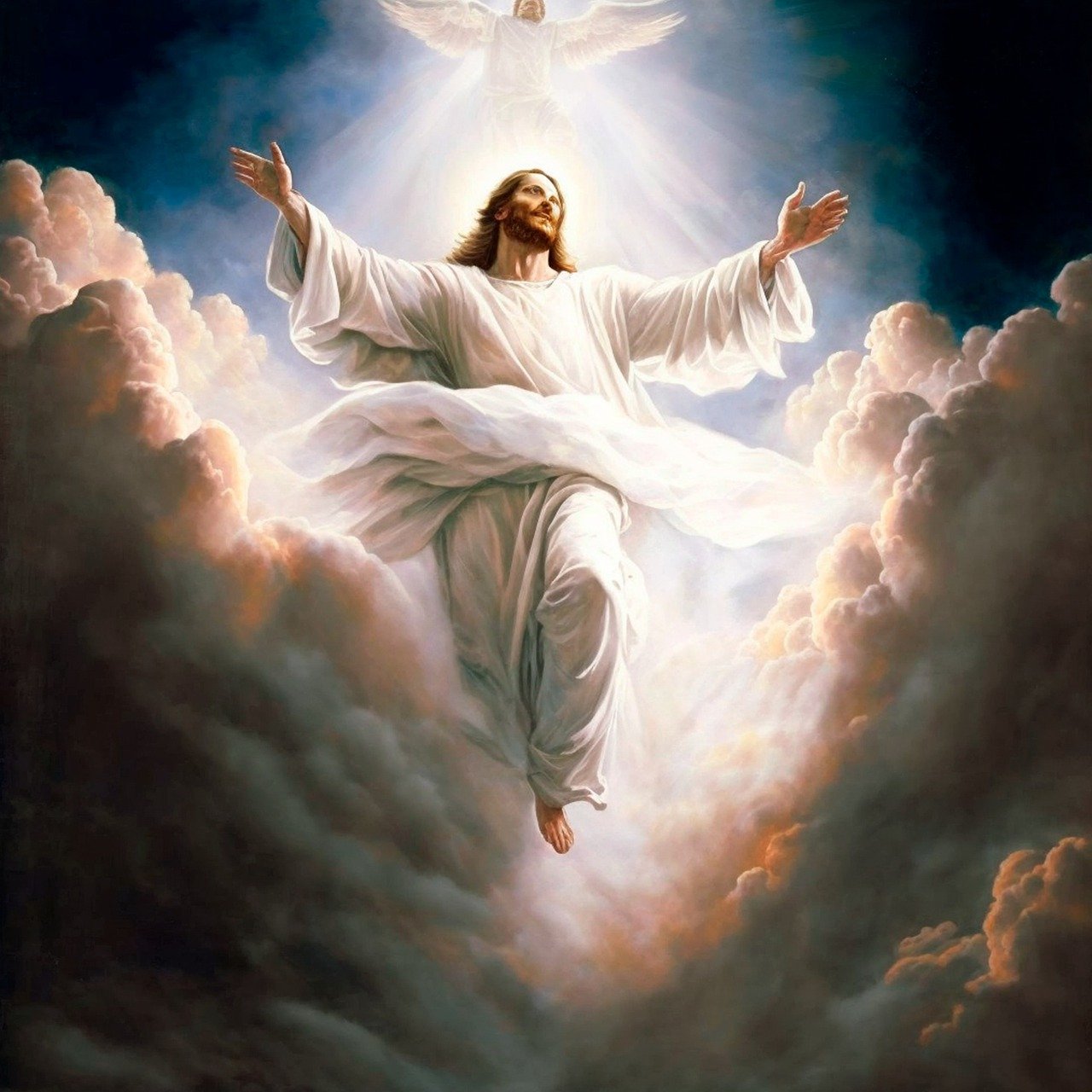Chapter 10: Eschatology
I. Basic Concepts of Eschatology
A. The Rapture
Key Scriptures:
1 Thessalonians 4:13–18; 1 Corinthians 15:51–54; John 14:3
Description of the Rapture:
- Christ descends into the air.
- Believers who have died in Christ will be resurrected.
- The bodies of living believers will be transformed.
- All believers, living and dead, will receive glorified bodies.
- All believers will be caught up to meet the Lord in the air.
- Christ will take all believers into heaven.
Timing of the Rapture:
- Pre-Tribulation View: Rapture occurs before the seven-year Tribulation.
- Mid-Tribulation View: Rapture occurs in the middle of the Tribulation.
- Post-Tribulation View: Rapture occurs after the Tribulation.
- Partial Rapture View: Only some saints are raptured before the Tribulation.
B. The Great Tribulation
Definition:
A seven-year period before Christ’s second coming when Satan persecutes Israel and believers, leading to many martyrs. During this time, God’s wrath is poured out upon an unbelieving world.
Key Scriptures:
Revelation 6–19; Daniel 9:24–27; Matthew 24; 1 Thessalonians 5:2; 2 Thessalonians 2:2
Description:
- The Tribulation is God’s judgment upon the whole earth (seals, trumpets, bowls).
- It begins after the Rapture.
- It lasts seven years (Daniel 9:24–27).
- It consists of two equal periods of three and a half years.
- In the first half, Israel makes a covenant with the Antichrist.
- In the second half, the Antichrist breaks the covenant (“the abomination of desolation”).
- The latter half is called “the Great Tribulation,” “the Day of the Lord,” or “the Time of Jacob’s Trouble.”
- It ends with the Battle of Armageddon and Christ’s return.
Purposes:
- To prepare Israel to receive the Messiah’s kingdom (Deut. 4:30; Matt. 24:9–26; Rev. 7:4–8; Dan. 12:1).
- To bring judgment on unbelieving nations (Rev. 3:10; 6:15; 13:11–18; 14:8; Matt. 24:4–28).
C. The Second Coming of Christ
Key Scriptures:
Zechariah 14:1–4; Matthew 24–25; Revelation 19:11–21
Description:
- Christ will literally and bodily return to earth, fulfilling Acts 1:9–11.
- His feet will stand on the Mount of Olives, east of Jerusalem (Zech. 14:4).
- His return will end the Battle of Armageddon (Rev. 16:16; 19:11–21).
- The Antichrist and the False Prophet will be thrown into the lake of fire (Rev. 19:19–20).
- Christ will judge surviving Israelites (Matt. 24:29–25:30; Ezek. 20:34–38).
- Christ will judge surviving Gentiles (Matt. 25:31–46).
- The saved (Jews and Gentiles) enter the Millennial Kingdom; unbelievers are cast into the lake of fire.
- Tribulation martyrs will be resurrected to reign with Christ (Rev. 20:4).
- Old Testament saints will also be resurrected (Dan. 12:1–2).
- The Millennial Kingdom begins and lasts 1,000 years.
D. The Millennial Kingdom
Key Scriptures:
Zechariah 14:9–11; Revelation 20:4
Description:
- Duration: 1,000 years (Rev. 20:4–7).
- Characteristics: righteousness (Isa. 26:2), obedience (Jer. 31:33), holiness (Isa. 6), truth (Ps. 85:10–11), fullness of the Spirit (Joel 2:28–29), peace (Isa. 2:4), joy (Isa. 9:3–4), glory (Isa. 35:2), release from the curse (Isa. 11:6–9), health and healing (Jer. 30:17).
- Christ will reign personally on earth.
- Satan will be bound in the abyss for 1,000 years (Rev. 20:1–3).
- Afterward, Satan will make one final rebellion (Rev. 20:7–10).
- The Millennium fulfills the Abrahamic, Davidic, and New Covenants (Gen. 12; 2 Sam. 7; Jer. 31).
Views on the Millennium and Christ’s Return:
- Postmillennialism:
- Christ returns after the Millennium.
- The world becomes Christianized through the church.
- Israel’s promises are fulfilled spiritually in the church.
- Amillennialism:
- The church age is the Millennium.
- No literal thousand years.
- Israel’s promises are spiritually fulfilled in the church.
- Premillennialism:
- Christ returns before the Millennium.
- He personally establishes a literal 1,000-year kingdom.
- Israel and the church remain distinct.
E. The New Heaven and New Earth
Key Scriptures:
Revelation 21:1–22:5; 1 Corinthians 15:24–28
Description:
- Time ends; eternity begins.
- Follows the Great White Throne Judgment.
- Christ delivers the kingdom to the Father (1 Cor. 15:24–28).
- Unbelievers suffer eternal punishment in the lake of fire (Matt. 25:41; Rev. 20:14–15).
- Believers dwell eternally with God and the Lamb (Rev. 21–22).
F. Judgments
1. Judgment Seat of Christ:
- For believers — works are tested (Rom. 14:10–12; 1 Cor. 3:10–15; 2 Cor. 5:10).
- Salvation is secure; only the value of works is judged.
- Determines rewards.
- Likely occurs after the Rapture and before the Second Coming.
2. Old Testament Saints:
- Judged at the end of the Tribulation to enter the Millennium (Dan. 12:1–3).
3. Surviving Jews of the Tribulation:
- Judged on faith in Christ as Messiah (Matt. 25:1–30; Ezek. 20:34–38).
4. Surviving Gentiles (Sheep and Goats Judgment):
- Judged by their treatment of Israel, revealing their faith (Matt. 25:31–46).
5. Tribulation Martyrs:
- Resurrected and rewarded before the Millennium (Rev. 20:4–6).
6. Satan and Fallen Angels:
- Cast into the lake of fire after the Millennium (Matt. 25:41; Rev. 20:10).
- Believers will somehow participate in judging them (1 Cor. 6:3).
7. Great White Throne Judgment:
- For all unbelievers of all ages (Rev. 20:11–15; John 5:29).
- They are judged by their deeds and cast into the lake of fire—the second death.
II. Introduction to Dispensationalism
A. The Seven Dispensations
- Innocence: Genesis 1:28–3:6 — Adam and Eve before the Fall.
- Conscience: Genesis 4:1–8:14 — Human responsibility governed by conscience until the Flood.
- Human Government: Genesis 8:15–11:9 — Institution of civil authority; ended at Babel.
- Promise: Genesis 11:10–Exodus 18:27 — Abrahamic covenant; faith-based relationship before the Law.
- Law: Exodus 19:1–Christ’s crucifixion — Israel governed by Mosaic Law; ends at the cross.
- Grace (Church Age): Acts 2–Rapture — Salvation by grace through faith; Church distinct from Israel.
- Kingdom: Revelation 20:1–5 — The Millennial reign and the eternal state (New Heaven and Earth).
